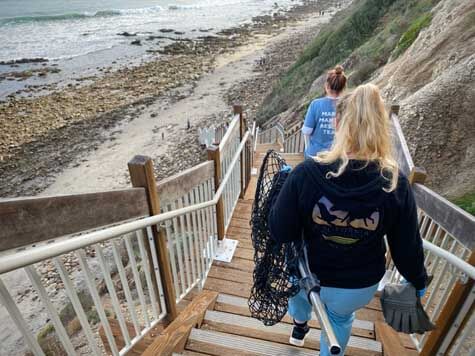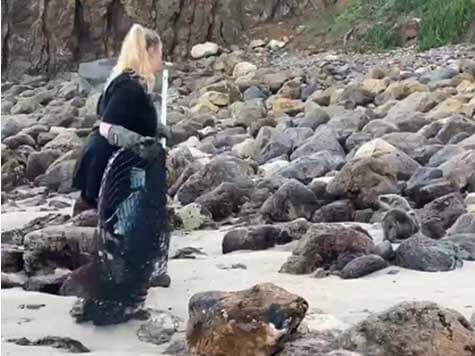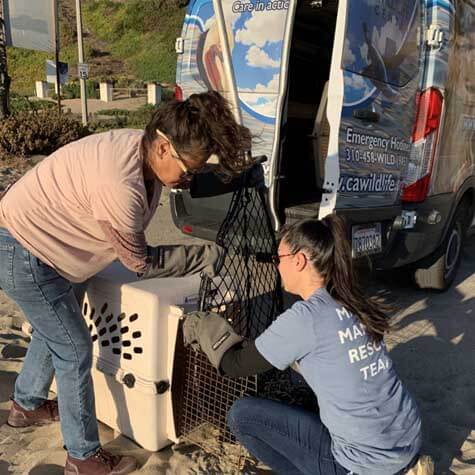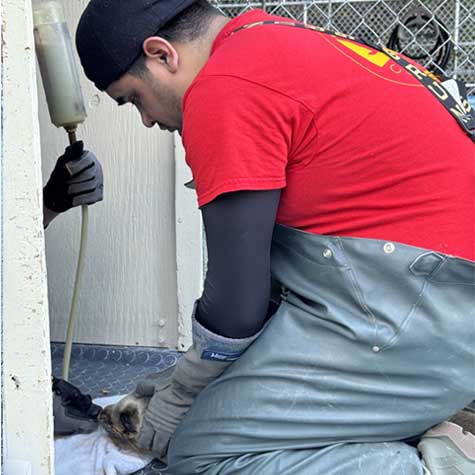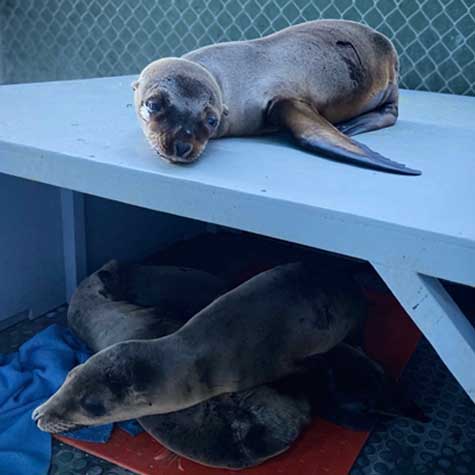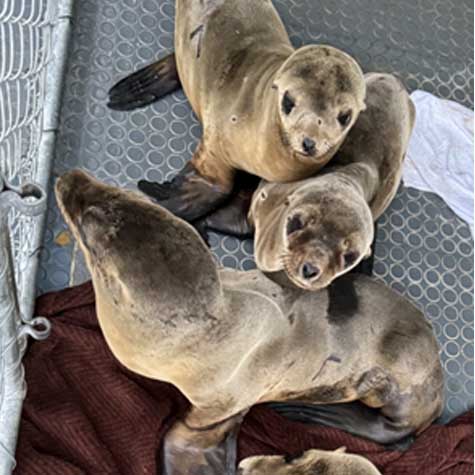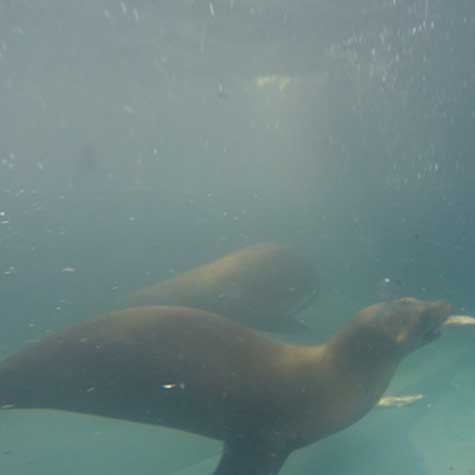The Pinniped Rehabilitation Pathway: From Rescue to Release at CWC
By: Heather Henderson, Marine Mammal Program Manager
Marine Mammal Response team heads out to Big Dume to investigate a report of a malnourished California Sea Lion pup that isn’t moving and has been on the busy beach for a few hours.
Volunteer Lissa prepares to net the California Sea Lion pup after assessing that a rescue is warranted.
Staff Annika and volunteer Mary transfer a young California Sea Lion from the capture net into the travel kennel in preparation to transport back to the Center for care.
Newly rescued California Sea Lion pup arrives at the center and awaits a full intake exam.
Stranding Coordinator Annika checking the flippers for injury and irritation while performing an intake examination.
The first supportive care administered by intern, Jose, is a tube feed via gravity flow. The patient is given electrolytes along with nutritional supplements. All patients are dehydrated, and many are in poor body condition.
Once clearing a short quarantine period, patients in a similar state of health are housed and treated together. They are provided areas to climb and hide along with supplemental heat when the temperatures are cool.
Young California Sea Lions are rehabbed in small groups. By keeping them with other sea lions, stress is reduced, and normal social behaviors are reinforced, limiting the potential for bonding to the caregivers.
Competitive foraging underwater is one of the criteria considered when evaluating readiness for release.
The best result! Two rehabilitated California Sea Lions are returned to their home in the Pacific Ocean.

